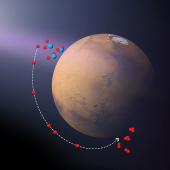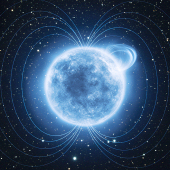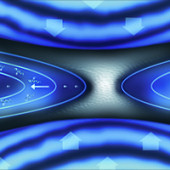ESA Science & Technology - Science Results
Science Results
Science Results
For the past decade, ESA's Mars Express orbiter has been observing atmospheric structure on the Red Planet. Among its discoveries is the presence of three separate ozone layers, each with its own characteristics. A new comparison of spacecraft data with computer models explains how global atmospheric circulation creates a layer of ozone above...
Published: 29 September 2013
For the first time, astronomers have caught a pulsar in a crucial transitional phase that explains the origin of the mysterious millisecond pulsars. The discovery was made possible by the coordinated efforts of ESA's two missions that scan the high-energy sky: INTEGRAL and XMM-Newton.
Published: 25 September 2013
For the first time, astronomers have caught a pulsar in a crucial transitional phase that explains the origin of the mysterious millisecond pulsars. The discovery was made possible by the coordinated efforts of ESA's two missions that scan the high-energy sky: INTEGRAL and XMM-Newton.
Published: 25 September 2013
Near-Earth space is populated by charged particles - electrons and ions - which occupy regions known as the plasmasphere and the Van Allen radiation belts. Over the past decade, the four identical spacecraft of ESA's Cluster mission have made numerous studies of these regions, and a recent paper has revealed intriguing links between these...
Published: 10 September 2013
Astronomers have used the NASA/ESA Hubble Space Telescope and ESO's New Technology Telescope to explore more than 100 planetary nebulae in the central bulge of our galaxy. They have found that butterfly-shaped members of this cosmic family tend to be mysteriously aligned - a surprising result given their different histories and varied properties.
Published: 4 September 2013
Astronomers have used observations from Hubble's CANDELS survey to explore the sizes, shapes, and colours of distant galaxies over the last 80% of the Universe's history.
Published: 15 August 2013
Astronomers using ESA's XMM-Newton have measured the magnetic field in a small surface feature of a magnetar for the first time. Until now, only the dipolar magnetic field of magnetars had been measured. With a new technique, the astronomers have revealed a strong, localised magnetic field in the magnetar that had the lowest dipolar field of all.
Published: 14 August 2013
Astronomers using the NASA/ESA Hubble Space Telescope have solved the 40-year-old mystery of the origin of the Magellanic Stream, a long ribbon of gas stretching nearly halfway around the Milky Way.
Published: 8 August 2013
Some galaxies hit a point in their lives when their star formation is snuffed out, and they become "quenched". Quenched galaxies in the distant past appear to be much smaller than the quenched galaxies in the Universe today. This has always puzzled astronomers - until now.
Published: 1 August 2013
Scientists have discovered a long-sought piece in the puzzle of where high-energy particles in Earth's magnetosphere come from. Using data from ESA's Cluster mission, they found that magnetic reconnection can accelerate electrons to very high energies, as long as reconnection happens at a variable pace rather than steadily.
Published: 18 July 2013
A steady wind, discovered by ESA's Cluster mission, is slowly escaping from Earth's plasmasphere - the torus of plasma that surrounds our planet's atmosphere. The outflow amounts to almost 90 tonnes a day. Predicted by theory two decades ago, this is one of the main mechanisms that replenishes Earth's magnetosphere with fresh plasma.
Published: 2 July 2013
As the closest planet to Earth, Venus is a relatively easy object to observe. However, many mysteries remain, not least the super-rotation of Venus' atmosphere, which enables high altitude winds to circle the planet in only four days. Now images of cloud features sent back by ESA's Venus Express orbiter have revealed that these remarkably rapid...
Published: 18 June 2013
A survey from Herschel has revealed that the reservoir of molecular gas in the Milky Way is hugely underestimated - almost by one third - when it is traced with traditional methods. The discovery not only indicates that there is more raw material for the formation of new stars in the Galaxy, but also that it extends farther than astronomers knew.
Published: 11 June 2013
Scientists have confirmed the presence of PAHs - Polycyclic Aromatic Hydrocarbons - in the upper atmosphere of Saturn's largest moon, Titan. After forming, PAHs grow into larger aggregates that drift down, eventually giving rise to aerosol particles in the haze layer that blankets Titan's surface. The study is based on data from the Cassini...
Published: 5 June 2013
New global maps of Mars released on the 10th anniversary of the launch of ESA's Mars Express trace the history of water and volcanic activity on the Red Planet, and identify sites of special interest for the next generation of Mars explorers.
Published: 3 June 2013
The NASA/ESA Hubble Space Telescope has produced the most detailed observations ever of the Ring Nebula (Messier 57). This image reveals intricate structure only hinted at in previous observations, and has allowed scientists to construct a model of the nebula in 3D - showing the true shape of this striking object.
Published: 23 May 2013
Astronomers have found a rare encounter between two massive and gas-rich galaxies in a survey from Herschel. The event took place when the Universe was only about three billion years old and involved two galaxies forming stars with exceptional efficiency whilst in the process of merging. This galactic collision would go on to form a very massive...
Published: 22 May 2013
The NASA/ESA Hubble Space Telescope has found signs of Earth-like planets in an unlikely place: the atmospheres of a pair of burnt-out stars in a nearby star cluster. The white dwarf stars are being polluted by debris from asteroid-like objects falling onto them. This discovery suggests that rocky planet assembly is common in clusters, say...
Published: 9 May 2013
Observing the Galactic Centre with Herschel, astronomers have detected molecular gas at surprisingly high temperatures - up to 1000 K. The molecules are probably heated up by shocks as gas surges towards Sagittarius A*, the region harbouring the supermassive black hole at the centre of the Milky Way.
Published: 7 May 2013
For the first time, scientists have resolved the detailed structure of the core region where magnetic reconnection takes place in the magnetosphere of Earth using unprecedented wave measurements. The study, based on data from ESA's Cluster mission, has mapped different types of electrostatic waves in this region. The waves trace populations of...
Published: 2 May 2013
—
20 Items per Page



















